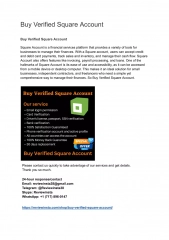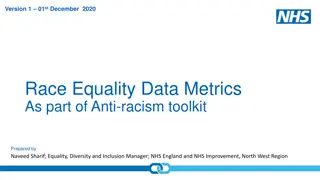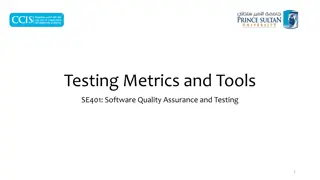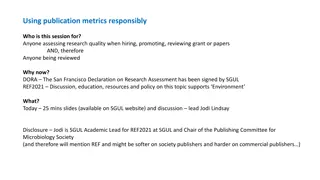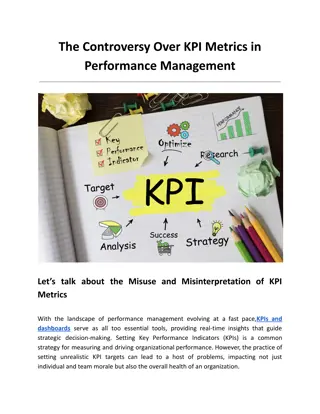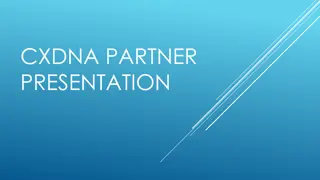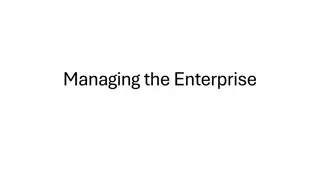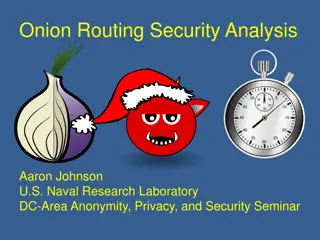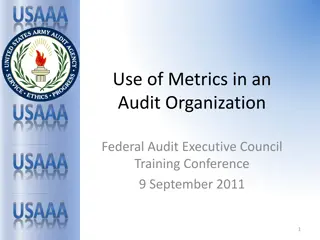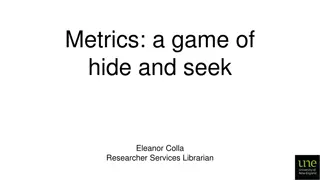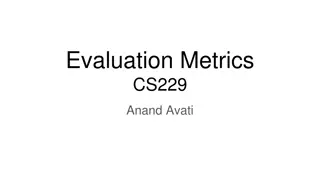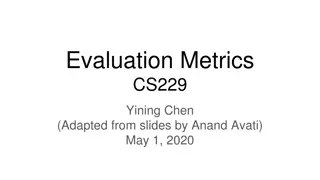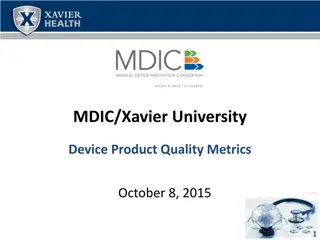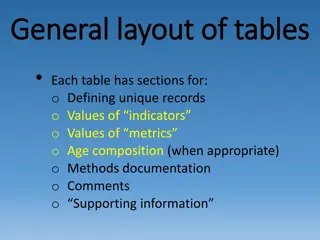Workshop on Metrics in Key Account Management with Dr. Diana Woodburn
Dr. Diana Woodburn, a key figure in Key Account Management (KAM), discusses the importance of metrics in KAM to measure profitability, manager performance, and enhance relationship development. The workshop emphasizes on measurement essentials, creating a performance-driven culture, and the value of transparency in KAM practices.
Download Presentation

Please find below an Image/Link to download the presentation.
The content on the website is provided AS IS for your information and personal use only. It may not be sold, licensed, or shared on other websites without obtaining consent from the author. Download presentation by click this link. If you encounter any issues during the download, it is possible that the publisher has removed the file from their server.
E N D
Presentation Transcript
Welcome to AKAMs 1stTechnical Workshop Metrics in KAM Dr Diana Woodburn 17th October 2018 Professionalising Key Account Management
Dr Diana Woodburn & KAM What is KAM? Specialising in key account management (KAM) since 1996/7 People and company development in KAM, research, writing, new concepts, consultancy Cranfield KAM Best Practice Club founded in 1998, Warwick in 2005 Best-selling book KAM: The definitive guide and Handbook of SAM , the industry reference. Chairman of the Association for KAM (A4KAM.org) Multi-sector and multi-country: taught over 2,500 key account managers and over 500 directors Exceptional experience in KAM Is it worth it? How does KAM work?
Agenda Measuring key account management top to bottom Metrics for managing key accounts Key account profitability - the ultimate metric Measuring key account managers
Measurement cultures Measurement closes perception gaps and enables us to demonstrate the value we add. People find they enjoy working in performance based projects because they know what success is and are empowered to deliver it. Patrick Godfrey, Strategic Relationship Development Director, Halcrow Group 4
Being dishonest tells you nothing We may not have smoke but we do have mirrors!
Measuring key account management top to bottom
Measurement essentials WHY? e.g. Improve relationship Stay on track HOW? WHAT? Purpose-driven outcomes, not just outputs Flexible, driven by supplier & customer needs Focus on purpose and response 7
Gaining visibility, attracting attention Numbers/data show the magnitude, importance and value of KAM internally Creates the language for powerful communication and develops understanding instead of opinion Puts pressure on other functions to co-operate
Why measure? Making the right strategic decisions Evidence-based decisions Objective assessment of KAM strategies Maximises ROI Converts strategy into implementation Tracks progress against plan Internal alignment: achieving motivation External alignment with customer Pinpoints underlying problems Aligning implementation with strategy Improving efficiency and productivity Opportunities for performance improvement Objective monitoring Learning and improvement 9
The KAM measurement model Making the right strategic decisions Strategy PROFIT Aligning implementation with strategy Realisation VALUE Operations Improving efficiency and productivity (Transactions/Process/Project) PRICE/PERFORMANCE SUPPLIER CUSTOMER Alignment of measurement 10
Measurement: Strategic level Profit ROI Asset value (customers) Risk Opportunity Boards Shareholders Benchmarks: Performance against business plan (short-term) Growth in shareholder value (long-term) 11
KAM programme level processes Key customer selection Customer portfolio management Contribution to corporate planning cycle Risk assessment Resource allocation/prioritisation Cross-boundary co-ordination Communication of customer strategy Organisational learning Strategy Future Value-add Change Change Operations Present
Measurement: Operational level Performance Service levels Price Revenue Volume Failure rates etc Line Mgmt Buyer Users Benchmarks: Performance against previous period Performance against agreement 13
Measurement: Realisation level (supplier) Value Sales? Key account attractiveness Customer risk Customer satisfaction/view of business strength Customer relationship Customer profitability Business extension Customer retention KAM input KA portfolio contribution Function Drs Supply Chain Drs KAMgrs SBUs Benchmarks: Customer expectation Account plan Portfolio contribution plan 14
Timing: inputs and outputs YOUR COMPANY Lead indicators Lag indicators CUSTOMER Measurements of inputs/actions Measurements of outputs/outcomes 15
What do you think? Sales? Key account attractiveness Customer risk Customer satisfaction/view of business strength Customer relationship Customer profitability Business extension Customer retention KAM input KA portfolio contribution 1. Do these metrics reflect what your company would want to know about its KAM programme? 2. Are there others you want? What? 3. Are any not useful? Which? Why not? 4. Which measure inputs to KAM outcomes/which reflect outcomes?
Input/outcome awareness: KAM input (i) Score 0 1 2 3 Indicator Designated key account manager <10% of KAMgr s time 10-50% 50-100% 100% Non- existent Exists but ad- hoc, reactive, unclear membership Pro-active, internally focused Externally focused, formal ways of operating, clear membership KAM team Ad hoc Unconscious, asymmetrical Conscious, asymmetrical Formally defined, joint Relationship governance in place None Low participation (e.g. once per year) Medium: meets customer 2/3 times pa, calls for reports on issues, responds on request High: meets customer regularly, knows account issues, actively promotes, solves problems, accepts brief Executive sponsorship (Board level or equivalent)
KAM input (ii) 0 1 2 3 Score Indicator Customised offer Standard offer only Minor adjustments, superficial Major adjustments, not exclusive Major adjustments, exclusive Nobody knows Everyone in Sales and Customer Service knows All managers in supplier division/ country also know and repond Everyone in supplier division/country top to bottom knows and responds appropriately Organisation-wide awareness of and response to KA status Joint 3-year strategic plan Budget & annual review Annual review, action plan and budget Annual review, joint input to 1 year action plan and budget Analysis of customer & strategy, validated and jointly developed, agreed strategies for 3 years, predicted outputs and measures Standard Ad-hoc Defined but short- term Regular and frequent resource input, valued by customer Extra resource allocation Maximum score = 24
Tool: quick relationship check One way of measuring relationships Rating Strongly agree 3 Agree Disagree 1 Strongly disagree 0 To what extent does this statement apply to your relationship with your customer? Score If our relationship ended, both parties would find it difficult and complicated to exit 2 There is a real spirit of partnership and trust between our two companies Together we have produced long-term strategic plans for the development of our relationship and business together Any information at all relevant to our business together is passed straight on to the customer People at all levels in both organisations are in constant communication with each other We have both realised substantial benefits through working together Total Score Basic 0-6 Co-operative 7-11 Interdependent 12-15 Integrated 16-18
Metrics for managing key accounts
Who gets KAM? Key account selection/categorisation matrix High Star Strategic Customer s spend Relationship level: Basic Key account attractiveness Co-operative Status Streamline Interdependent Integrated Low Low High Supplier s business strength from the customer s perspective
Account attractiveness criteria Account attractiveness factors Hard Soft Customer attributes Customer needs Outcomes Potential for profit Financial outcomes/profit Risk reduction: working together Opportunities for product/service differentiation Spend Turnover Volume Cost to serve Contribution Price Growth Strategically important purchase Appropriate decision- making structure Right attitude to relationships Prepared to pay for value Prepared to invest Member of targeted segment Strategic fit (e.g. platforms, global) Want non-standard solutions (what?) Specifics (e.g. speed, compatible systems)
Assessing account attractiveness Assessing account attractiveness Account attractiveness criteria Weight Account A Rating 0-10 Account B Rating 0-10 Account C Rating 0-10 Score Score Score Total 100 Score = weight x rating (0 10)
Example: DHL and manufacturers Example Account attractiveness criteria Weight Account A Account B Account C Rating Score Rating Score Rating Score 1 Levy 25 10 250 0 0 0 0 2 Growth 15 10 150 5 75 7 105 3 Position of influence 10 6 60 2 20 6 60 4 Market diversity 5 4 20 4 20 8 40 5 Attitude to people development 15 4 60 8 120 4 60 6 Perception of skills gap 10 5 50 8 80 6 60 7 Number of people 20 6 120 0 0 6 120 100 710 315 445 Score = weight x rating (0 10)
Hard and soft criteria scales 1. Levy Current 2. Growth in marketplace Forecast weighted average % increase in their markets over next 3 years 4. Market diversity Number of sectors in which they operate 7. Number of people in UK Employed in engineering or construction jobs in UK, permanently or temporarily, thousands 10 1.3m< 10 20%+pa 10 Sectors 10 30+ 9 1.2m 9 18-19%pa 9 Sectors 9 27-30 8 1.1m 8 16-17%pa 8 Sectors 8 24-27 7 1.0m 7 14-15%pa 7 Sectors 7 21-24 6 0.9m 6 12-13%pa 6 Sectors 6 18-21 5 0.8m 5 10-11%pa 5 Sectors 5 15-18 4 0.7m 4 8-9%pa 4 Sectors 4 12-15 3 0.6m 3 6-7%pa 3 Sectors 3 9-12 2 0.5m 2 4-5%pa 2 Sectors 2 6-9 1 0.4m 1 2-3%pa 1 Sectors 1 3-6 0 0.3m> 0 0-1%pa 0 Sectors 0 0-3 3. Position of influence Able to inlfuence other players in the sector 5. Attitude to people development Attitude and willingness 6. Perception of gap Between current and future workforce skills needed 10 Strong influence on government 10 Prepared to develop people for the industry 10 Extremly concerned and acting at a high level in the organisation 8 Thought leader throughout supply chain 8 Strategically people-focused business 8 Concerned and planning action, but plan not completely fulfilled 6 Thought leader in peer group 6 Pro-active in training needs 6 Taking tactical action 4 Respected in peer group 4 Reactive in training needs 4 Talks the talk, does not 'walk the walk' 2 Some influential individuals 2 Training only where financially supported 2 Apathetic recognition of issue, but no action 0 No influence 0 No training 0 Does not recognise issue, not concerned
Customers measure key suppliers Breakdown Breakdown Breakdown Breakdown Headline criteria Headline criteria Headline criteria Score 0-5 0-5 0-5 0-5 Score Score Score Product quality management Supply management Supply management Supply management Product quality management Supply management Teamwork Teamwork Teamwork Product quality management Product quality management Assured supply Assured supply Assured supply Assured supply Teamwork Openness, honesty, fair play Openness, honesty, fair play Openness, honesty, fair play Openness, honesty, fair play Values/trust based Values/trust based business Values/trust based Values/trust based business relationship business relationship relationship business relationship Quality management Environmental management Management depth Quality management Environmental management Management depth Competitive validation Process optimisation Financial strength Communication Best practices Best practices Quality management Environmental management Management depth Competitive validation Process optimisation Financial strength Quality management Environmental management Management depth Competitive validation Process optimisation Financial strength Communication Management excellence Management excellence Management excellence Management excellence Low cost - best value Low cost - best value Low cost - best value Low cost - best value Competitive validation Process optimisation Financial strength Communication Best practices Customer satisfaction Customer satisfaction Customer satisfaction Communication Best practices Customer satisfaction Health & safety Health & safety Health & safety System player System player System player System player Health & safety Product consistency Product consistency Product consistency Product consistency Technical competencies Technical competencies Technical competencies Technical competencies Overall score Overall score Overall score Overall score 26
Customer's view of your business strength Customer's view of your business strength * Different for each potential key account Customer s critical success factors (CSFs)* Weight Your company Rating 0-10 Best Other competitor Rating 0-10 competitor Rating 0-10 Score Score Score Total 100 Score = weight x rating (0 10)
Your soft criteria? Do you use qualitative factors in selecting/ categorising your customers? If not, why not? What soft metrics about customer needs and customer attributes would be appropriate for your customers?
Complete the process with the customer Process for measurement and matrix Step 1 Step 1 Decide approximately how many key accounts can be managed Step 2 Step 2 Agree the scope/identity of potential key customers Agree the scope/identity of potential key customers Step 3 Step 3 Decide your criteria for assessing key customers Decide your criteria for assessing key customers Step 4 Step 4 Determine theoretical attractiveness of likely candidates Determine theoretical attractiveness of likely candidates Step 5 Step 5 Estimate your current position with customers Estimate your current position with customers Build the key account matrix & make your provisional selection of key customers Build the key account matrix & make your provisional selection Step 6 Step 6 Verify with customers: their actual attractiveness their real critical success factors for you their view on how they rate you currently their attitude to a close relationship with you their attitude to a close relationship with you Verify with customers: Step 7 Step 7 their actual attractiveness their real critical success factors for you their view on how they rate you currently 29
Why measure account risk? To input to your responses, your decisions and actions: making offers, supporting customers, prposong/accepting terms etc. To help to understand, manage and reduce risk To build into your calculations of the account s longer-term value To allow the company to evaluate and manage the risk attached to its investments in customers, and its overall financial position
Identifying customer risk systematically Relative risk index
Evaluating relative customer risk Customer risk factor Weight Customer A Rate 0-10 Customer B Score Rate Customer C Score Rate Customer D Score Rate Customer E Score Score Rate 0-10 0-10 0-10 0-10 Total 100 Score = weight x rating (0 10)
Risk and return Line of acceptable risk/return Return Adding to shareholder value Level of return received Any strategy below the line destroys shareholder value Zero risk rate of return Specific risk of customer Relative customer risk
How would you assess customer risk? How would you use a systematic assessment of customer risk in your business? What criteria would be appropriate to your business? What risks you commonly see?
Operationally: aligning metrics with customers Supplier KAM organisation Customer
Key account profitability - the ultimate metric
Current approaches to profitability Most organisations take a product profitability approach, not a customer profitability approach. Approaches are usually focused on a single period which takes no account of the value of the future relationship. The product profitability approach disregards costs of customer behavior you don t know who is a good or a bad customer. Allocating costs proportional to sales revenue or number of units purchased penalizes efficient customers so you don t recognize or reward their low-cost behaviour so they are open to your competitors who do
Treating customers as assets Investment Business case development or maintenance of an asset increase in value short-term yield longer-term return Year 1 Year 1 Year 2 Year 2 Year 3 Year 3 Asset value value Asset Asset value value Asset Asset Asset Asset Asset value value value value Yield Yield Yield Yield
Valuing customers to make a business case Customer Lifetime Value (CLV) or Net Present Value (NPV) The discounted value of the cash flow (DCF) generated over the life of the relationship with the company. Doyle, 2000 1. Define exactly who is the target customer 2. Estimate sales each year 3. Identify costs 4. Calculate net profit contribution for each year after all account- specific costs have been deducted 5. Account for commercial risk 6. Use DCF techniques to evaluate profit contributions 7. Add discounted profit contributions to show overall account NPV 8. Compare results with other accounts Modified from Key Customer Profitability Woodburn, Holt & McDonald, 2004
Measuring v expectations of performance P P KAM high KAM high/ medium G CR G CR High Strategic customers customers Strategic Star Star customers customers Strategic investment investment Strategic Selective investment investment Selective Account attractiveness Status customers customers Status Streamline Streamline customers customers Pro-active maintenance maintenance Pro-active Manage for Manage for cash cash P P Low KAM low KAM medium Low High Supplier s business strength from the customer s perspective G CR G CR 40
Calculate Key Account NPV Last year This year Customer income/costs TY+1 TY+2 TY+3 Revenue Gross margin = revenue - direct product cost Probability of achievement % Probability adjusted GM Cost to serve Specific investment costs Contribution = GM all account specific costs Discount rate % Discount rate adjusted contribution NPV (total TY+1, TY+2, to TY+3)
NPV example Last year This year TY+1 TY+2 TY+3 Customer income/costs $m Revenue 5 6 7 10 12 Gross margin (Revenue - direct product cost) 2.0 2.4 2.8 4.0 4.8 Probability of achievement % 100% 90% 75% 65% 100% Probability adjusted GM 2 2.4 2.52 3.0 3.12 Cost to serve 0.2 0.3 0.4 0.5 0.5 Specific investment costs 0 0.1 0.3 0.1 0.2 Contribution (GM all customer specific costs) 1.8 2.0 1.82 2.4 2.42 Discount factor (=USA 8.5%pa) 1.18 1.09 1.28 NPV: Discount rate adjusted contribution (Contr/DR) 1.8 2.0 1.67 2.03 1.89 3-year NPV (Total TY+1, TY+2, TY+3) 5.59
How do you value customers? What kind of business projections do you make currently in your business? Are there any barriers in your business to valuing key customers by this NPV approach? Are they valid barriers? Could you align this approach with your company s business planning cycle?
Measuring key account managers
The KAMs job Relationship management Resource management Risk management Retention strategy Creating value for customers
Exploring the nature of the job by activity Too much time About right Not enough time Key Account Manager Activity As is Should be 25% 20% Developing relationships 15% 25-30% Implementing and motivating the deal operationally 0% Developing industry knowledge/ understanding strategy/ planning 5-15% 30-50% 5-10% Selling/achieving sales result, bid sign-off 0-15% 5-10% Internal alignment for deal commercially 15% 5% Internal day-to-day problem solving 0-10% 5% Reporting/providing information 0-5% 5% Training and education 0% 5% Internal understanding of capability 0% 5% Promoting brand/business 0% 5% Team management ? 10% Other 46
Why have KPIs? Based on what? Reducing uncertainty Clarity of requirement Rewarding Serious distorting factors Setting targets Based on what kams control? Results Behaviour Account objectives Business objectives
Factors in achieving results What is done How it s done Values Attitude Competencies Activities Motivation Behaviour Customer Supplier Results
Elements of performance External context to individual performance, including relationship with team. As held by individuals, but fit with business values important. Emphasis can change over time. Accessible by observable behaviours over longer time than competencies. State of mind founded on personal values. A state of mind which companies believe to be positively driven by incentives Learnable capabilities to input to implementing tasks. Can be tested and minimum standard set. Series of actions or operations. Being active, energetic, diligent. Combination of what can be done and how it is done. Something seen, observable. Relevant outcomes are normally sales revenue, margin, contribution or other financial benefit to the company. Lag between input and outcome can be months or years. Role Values Attitude Motivation Competencies Activity Behaviour Results/outcomes
Different approaches to performance Management & Recognition Individual & Cash Fixed salary or high % Close management Heavily procedural Process orientated Low risk approach Bonus culture, lower salary % Less management/ none Intellectual/creative More variable & risky Reward classes: Cash bonus Salary increase Recognition/non-financial rewards.



